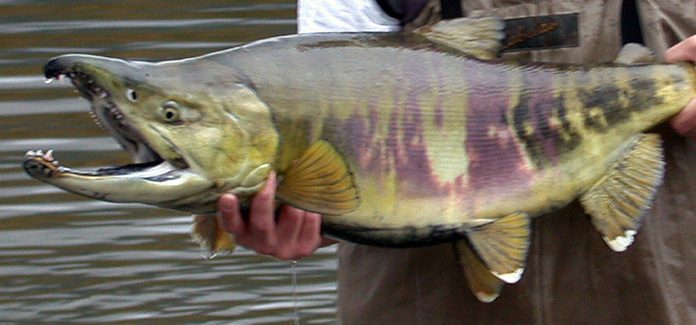
Sometimes being underwater is a good thing, especially for Columbia River salmon nests, called redds. This fall, federal agencies are increasing Columbia River flows below Bonneville Dam to ensure the redds of spawning chum salmon stay covered with water. The agencies have conducted these “chum operations” every fall since 2000.
Earlier this month, the river will be held between 11.5 to 13 feet above sea level to ensure chum can spawn at the mouth of Hamilton Creek in the Columbia River Gorge. For chum operations to occur, water is released from reservoirs as far away as Hungry Horse and Libby dams in Montana, more than 850 river-miles upriver from Bonneville Dam. The water is then captured and released as needed to create spawning flows that keep the redds underwater.
The annual run of Columbia River chum salmon historically numbered more than 1 million. However, habitat loss, harvest and other factors caused their numbers to plummet during the last century to a low of just a few thousand fish returning to the river each year. The federal government listed Columbia River chum as threatened under the Endangered Species Act in 1999.
Called “dog” salmon because of their canine-like teeth, chum are the last salmon of the year to return to the Columbia to spawn, and their young are the first to leave for the ocean in the spring. Chum salmon generally spawn in the lower part of the Columbia River below Bonneville Dam, in areas where warm ground water pushes up through the gravel where salmon make their nests. The warm water quickly incubates their eggs.
The Bonneville Power Administration has funded two hatchery programs and constructed new spawning habitat for chum in several areas of the lower Columbia River. These efforts appear to be showing signs of success – more than 20,000 chum returned to the Columbia in 2015, the highest number since 2002.
Chum are not the only salmon to benefit from special river operations. River levels above McNary Dam are also adjusted this time of year for chinook salmon spawning on the Vernita Bar and down through the Hanford Reach, a 50-mile free-flowing stretch of the Columbia River that ends near Richland, Washington.








